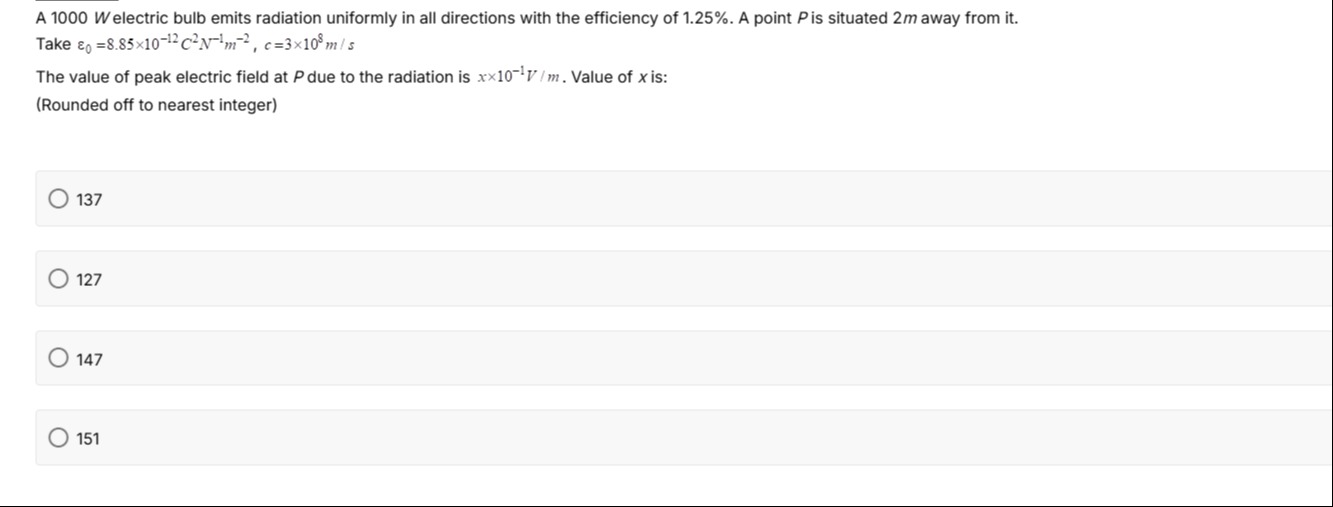Question
Question: A 1000 $W$ electric bulb emits radiation uniformly in all directions with the efficiency of 1.25%. A...
A 1000 W electric bulb emits radiation uniformly in all directions with the efficiency of 1.25%. A point P is situated 2m away from it. Take ϵ0=8.85×10−12C2N−1m−2, c=3×108m/s
The value of peak electric field at P due to the radiation is x×10−1V/m. Value of x is: (Rounded off to nearest integer)

137
136
138
135
137
Solution
The electric bulb consumes a power of Pbulb=1000W. The efficiency of the bulb in emitting radiation is η=1.25%=0.0125. The power radiated as electromagnetic waves is Prad=Pbulb×η=1000W×0.0125=12.5W.
Since the radiation is emitted uniformly in all directions, it is an isotropic source. The intensity (I) of the radiation at a distance r from the source is given by the power per unit area of a sphere of radius r: I=4πr2Prad
At point P, the distance from the bulb is r=2m. So, the intensity at point P is: I=4π(2m)212.5W=16π12.5W/m2
The intensity of an electromagnetic wave is related to the peak electric field (E0) by the formula: I=21cϵ0E02 where c is the speed of light and ϵ0 is the permittivity of free space.
We can rearrange this formula to solve for E0: E02=cϵ02I E0=cϵ02I
Substitute the values: I=16π12.5W/m2 c=3×108m/s ϵ0=8.85×10−12C2N−1m−2
E0=(3×108)×(8.85×10−12)2×16π12.5 E0=26.55×10−416π25 E0=16π×26.55×10−425
Using π≈3.14159: 16π≈50.265 E0=50.265×26.55×10−425 E0=1334.55×10−425 E0=1334.5525×104 E0=1334.55250000≈187.325 E0≈13.6866V/m
The problem states that the peak electric field is x×10−1V/m. So, E0=x×10−1V/m. 13.6866=x×10−1 x=10−113.6866=13.6866×10=136.866
Rounding off to the nearest integer, x=137.
